- Empty cart.
- Continue Shopping
ChessBase 16 and Fritz 17
2.637.000 ₫
ChessBase is a personal, stand-alone chess database that has become the standard throughout the world. Everyone uses ChessBase, from the World Champion to the amateur next door. It is the program of choice for anyone who loves the game and wants to know more about it. Start your personal success story with ChessBase and enjoy the game even more.
| Languages: | English, German, Spanish, Italian, French |
| System: | Windows 7 or higher |
| Delivery: | Download |
| Level: | Any |
What you can do with ChessBase:
Retrieve games according to openings, players and tournaments; generate tournament cross tables and full graphic statistics of players or openings; “Similarity search” shows all games with similar pawn structures, sacrifice patterns, endgame positions, etc.; “Let’s check”*: access the world’s largest database of in-depth analysis (more than 200 million positions); “Instant Analysis”: Any unannotated game is analysed almost without delay immediately on loading (optional). “Assisted Analysis”: as you enter a game, whenever you click on a piece an evaluation is produced for all its possible target squares; “Tactical Analysis” will annotate game, inserting commentary, variations and diagrams, before strong moves or errors, into a game or an entire database. It will also point out combinations, played in the game or missed, tries, attacks, initiative, and of course the latest in openings theory; Cloud analysis: you can analyse positions simultaneously with several engines from on different computers running in parallel; “Deep analysis”: generates an analysis tree that changes dynamically, as with time weaker variations are dropped; automatic analysis jobs for correspondence games; “Replay Training”: Playing through a game with the notation hidden and automatic training questions with tips for each individual move. Extended reference search for openings shows increase/decrease in popularity and typical recurring endgames; merge games on the fly into an opening tree; generate a dossier containing all available information on a specific player from the database; generate a comprehensive openings report with main and critical lines, plans and most important games; single click publication of games on the Internet; Improved search mask with tactical motifs and examples for manoeuvres and material distribution; Completely new search booster for patterns and plans; print games in superb quality with diagrams and multiple columns; Crisp new 3D boards thanks to raytracing technology; automatic update of your local reference database with the weekly installments of games (one year); access to the ChessBase online database with over eight million games*; mobile access with the ChessBase Account*.
New features:
Automatic opening surveys
The central new function in ChessBase 16 consists of automatic opening surveys for any move whatsoever. Until now opening preparation was above all about move selection. With the traditional tools such as LiveBook, Reference and Online Database, however, one’s attention is strongly concentrated on only the next move. It is much more effective to have a variation tree, an opening survey. ChessBase now provides that. At a glance you will see the complete opening in front of your eyes and you can immediately evaluate which variations are important to master safely. This ready survey can perhaps be supplemented by material you have prepared yourself and thus quickly becomes part of your own repertoire. But how is the move selection made? That may happen through an algorithm, but it is you who set the parameters, the style of the opening choice. To set it there is the choice between Main Lines – Fashion – Side lines – Gambit – Attack – Positional and Endgame. I would like to briefly present some of the styles which are perhaps most important for your practice.
“Fashion”. In it moves are selected which dominate modern practice. This often results in considerable deviations from the traditional main variations and delivers the most interesting and theoretically best founded survey. For the time-poor practician we recommend the “Side lines” style. Just as on a Google search we usually click only on the top links, in opening preparation too those moves which are frequently played and at the top of the list exercise a magnetic attraction. Like this, very playable secondary systems are overlooked through which passable positions can be reached and which demand little preparation time. There is a somewhat flashy opening survey in “Gambit” style, which takes into account any half-way playable sacrifice. Almost every one of the known gambits in chess theory will certainly show up in these surveys. Then we also have the style “Attack”. It searches in respectable recent games for the sharpest continuations possible. That leads to very aggressive secondary systems, e.g. often with an early h2-h4. When you wonder: “Who plays something like that?”, the answer is quite often “Magnus Carlsen”.
The search is based on your own reference database, thus best of all the latest Mega Database including the online updates. If someone else with a reasonably up-to-date reference database has already looked at a survey from that particular move it (while adjustable) comes directly from the server and thus is ready immediately.
Smooth handling of deep variation trees
Opening surveys with deeply nested variations make particular demands on the representation of the notation. For that reason ChessBase 16 possesses a new way of “folding” variations which can be opened or closed simply with a click of the mouse. Another novelty is the automatic recognition of games quoted. All the opening surveys of ChessBase 16 contain pointers to recent strong sample games.
Real time notifications of interesting opening trends
The tactical analysis for automatically commenting on games is extended by means of particular opening comments. ChessBase 16 recognises whether an innovation is important and comments appropriately. Furthermore, hints are provided to recent theoretical trends and successful secondary systems.
Further innovations in brief
Update of Mega database with one click. Improved search booster with a need for half the space on your hard disk. Link to ChessBase Shop with direct installation of purchased products. Preparation for opponents with spotting of weaknesses based on your own repertoire. Search for characteristic tactical positions in an opening variation.
New in ChessBase 16
- Opening surveys for every move with a single click. With a choice of focus: Main Variations, Fashion, Side Lines, Attacking, Gambits, Endgame
- Better overview when playing through deeply analysed games thanks to dynamic folding of the notation
- Urgent news about recently played innovations with direct access to the database
- Direct database access to tournaments being played live
- Preparation for opponents with recognition of their weaknesses taking into account your own repertoire
- Innovations and trends as annotations in Tactical Analysis
- Update-Service for MegaDatabase with a single click
- After an update to Megadatabase, overview of important recent innovations and theoretical trends.
- Tags for the management of games.
- Search for characteristic tactical positions in an opening variation
- Link to the ChessBase Shop with simple installation of purchased download products
- Slimmed down search booster: required hard disk space halved
- Playchess chat modernised
Fritz 17 – The giant PC chess program, now with Fat Fritz
At the turn of the century, Fritz fascinated the chess world with victories over Garry Kasparov and then-reigning World Champion Vladimir Kramnik. The “most popular chess program” (according to German magazine Der Spiegel) offers you everything you will need as a dedicated chess enthusiast, with innovative training methods for amateurs and professionals alike, plus access to the full suite of ChessBase web apps, including the Playchess playing server.
The neural chess engine “Fat Fritz”
In December 2017, a press release from Google shook the chess world to the core: its subsidiary Deep Mind built a neural network, dubbed Alpha Zero, which “learned” chess solely by playing millions of games against itself, yet was strong enough to beat Stockfish 8, a leading chess engine. This news was sobering and fascinating at the same time. Sobering in the sense that the decades old tradition of chess programming had been relegated to the shadows by a self-learning system. Fascinating because it was possible to hope that one could learn really new stuff about chess from this radical approach.
Nobody had expected that a cooperative effort by chess developers would soon make this technology generally available. The Open-Source- Project LCZero began to retrace the trail blazed by Google and in the meantime has acquired considerable strength. Suddenly a chess engine was available whose different analysis results provided new ideas on all fronts. LCZero too follows the Google philosophy, that the neural network only learns from games played against itself.
The idea soon came to use our existing base of hundreds of thousands of good grandmaster games to shorten this learning process. This approach was followed logically by our longserving technical editor Albert Silver and based on the LCZero technology he trained a neural network for a whole year with GM games.
The result is so convincing that we are now publishing it as “Fat Fritz” along with Fritz17. As things stand, Fat Fritz defeats in a direct comparison all traditional chess programs and even LCZero. The moves suggested in analysis are often extremely human and planned. With a painfully practical limitation: Fat Fritz needs (like LCZero) a very high performance Nvidia graphics card (“GPU”) in order to achieve its full playing strength. Nevertheless, here for the rst time in many years we can record a real breakthrough in chess programming. Fat Fritz and LCZero are already beginning to change opening theory.
Methodical opening training
Every average human brain is light years ahead of neural networks when it comes to mastering everyday situations. However, it is in some ways tiresome imprinting on one’s own neural network knowledge about opening variations.
Therefore Fritz 17 has new functions to offer to considerably simplify the constructing, administration and above all the transfer to memory of an opening repertoire. What use is the finest variation tree if one can’t remember it? Fritz 17 introduces a repertoire administration which is not based on whole variations but on moves. You decide on a move: “at’s the one I want to play myself ” and thereupon the whole variation is taken over into your repertoire. The advantage: with some decisions and a few clicks you can set up a useable repertoire. This repertoire is online, i.e. it can be accessed immediately by any computer and on the web.
Drill and play
Once you have clicked together a repertoire in that way, the fun begins: you now learn it by drilling. To do so you play your variations and Fritz replies in such a way that, as far as possible, you remain within your repertoire. At first the moves come according to their frequency in theory. After some time it becomes clear what you have mastered properly and what not. The problematic systems are then repeated more often so that you can achieve certainty quickly with the minimum of effort. This system is known from the learning of foreign languages.
For it to be fun, Fritz measures the size of the theoretical area you have mastered and enters it into a ranking list as a number of points. Helpful for practice is also the fact that in your drilling when you reach the end of a variation you can decide if you want to carry on as a training game. Drilling can also be done with any variation tree you wish to load (traditional ChessBase repertoire), even with a sole game if you would like to learn it by heart.
Ready-made repertoires included
Included with Fritz 17 is access to pre-prepared up-to-date repertoires. You can either drill with these as they come or incorporate them into your own repertoire with the usual clicks to mark moves. ese ready-made repertoires can be found in each case at four levels: simple, club, tournament and professional. at saves work; you do not need to extract a simpler club-level version from full-fledged professional repertoire on your own.
How tu use Fritz 17 by Sagar Shah
Here are the highlights:
- Now with “Fat Fritz“ * : An extremely strong neural net engine inspired by Alpha Zero, which produces human-like strategic analyses of world class quality.
- Improved Fritz 17 engine with traditional brute force search and evaluations technology
- Convenient one-click management of your opening repertoires
- Opening training with success control, measure your progress with e-learning technology
- Hundreds of ready-made repertoires included • “Blitz & Train“: Fritz generates tactical puzzles from your own blitz games
- Perfect analysis of endgames with up to seven pieces, access to “Let‘s Check“ • Improved 3D chess boards thanks to real-time ray tracing**
- Includes six months ChessBase Premium Account Membership: Now with 11 ChessBase web apps for mobile training, analysis,live chess and much more
*Fat Fritz is based on LCZero. LCZero is an open source project licensed through the GPL v3 with all due rights. Source code of LCZero and the modifications for Fat Fritz can be found at Github.
** Requires a powerful graphics card with NVIDIA chip
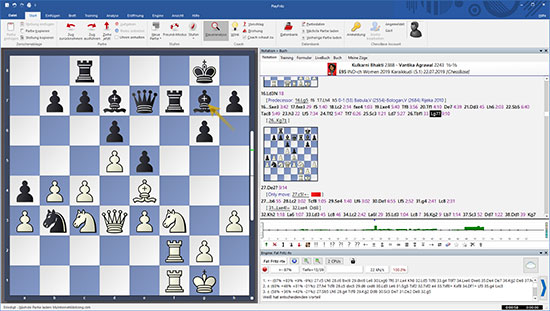

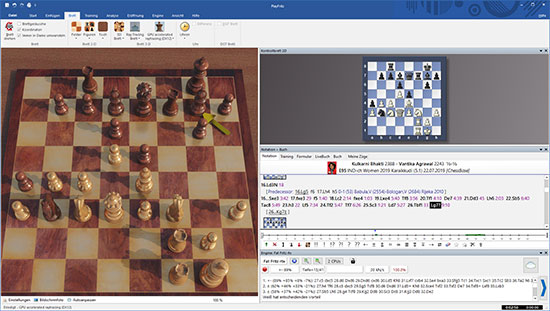
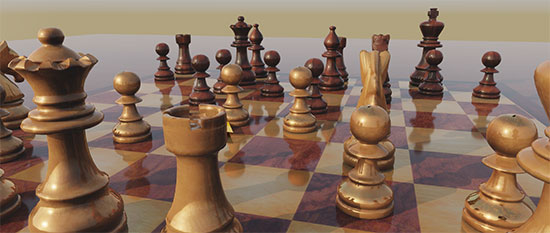
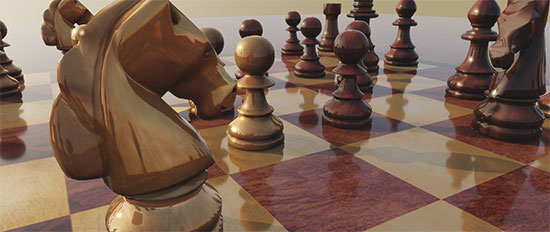
Chỉ những khách hàng đã đăng nhập và mua sản phẩm này mới có thể đưa ra đánh giá.

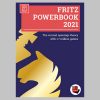
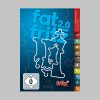




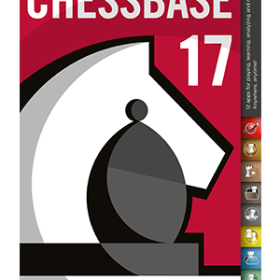
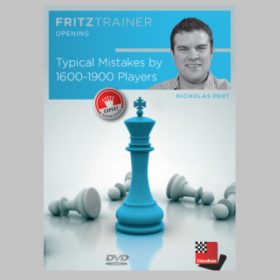
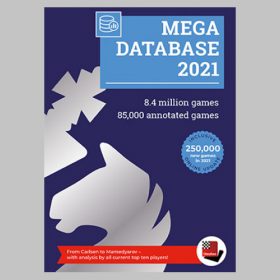
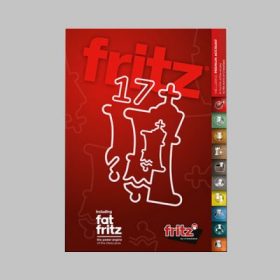
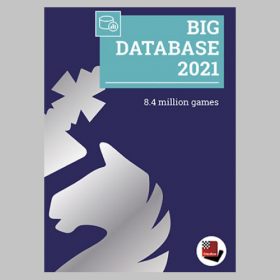
Đánh giá
Chưa có đánh giá nào.